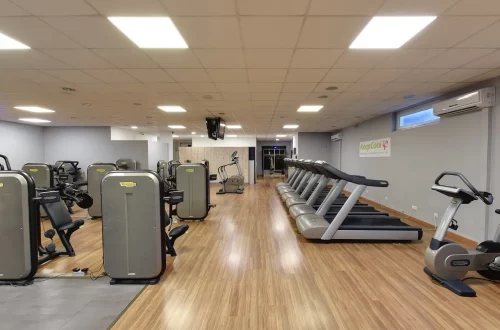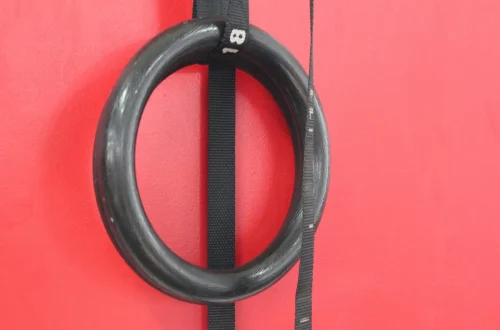
Understanding Lower Back Pain While Running: Causes and Solutions
Lower back pain while running is a common issue that affects many athletes and recreational joggers alike. It can be a debilitating condition, often hindering performance and enjoyment of physical activity. The lower back is a complex area of the body that supports a significant portion of our weight, and it is involved in many movements we perform daily. When running, the impact of each stride can exacerbate pre-existing conditions or lead to new injuries.
Understanding the causes of lower back pain in runners is crucial for both prevention and treatment. Factors such as poor running form, inadequate footwear, and underlying health conditions can contribute to discomfort. Moreover, muscle imbalances and lack of core strength are often overlooked culprits that can lead to pain during and after running.
Addressing lower back pain requires a multifaceted approach that includes proper training techniques, strengthening exercises, and sometimes professional intervention. By acknowledging the significance of this issue, runners can take proactive steps to ensure that their running experience remains enjoyable and pain-free. This article delves into various aspects of lower back pain while running, helping individuals comprehend the complexities surrounding this common ailment and explore effective strategies for relief and prevention.
Common Causes of Lower Back Pain in Runners
Lower back pain in runners can arise from a variety of factors. One of the most prevalent causes is improper running form. When runners maintain poor posture or fail to engage their core muscles, they can place undue stress on their lower back. Over time, this can lead to muscle fatigue and strain, resulting in pain. For instance, an excessive forward lean or overstriding can disrupt the natural biomechanics of the body, leading to discomfort.
Another significant factor is footwear. Wearing shoes that do not provide adequate support can result in misalignment of the spine and pelvis during running. It’s essential for runners to select footwear that fits well and suits their running style, as this can help in maintaining proper alignment and reducing the risk of injury. Additionally, the running surface plays a role; uneven or hard surfaces can increase the risk of jarring impacts that may contribute to pain.
Muscle imbalances are also a common culprit. Runners often focus primarily on their legs, neglecting other muscle groups that support proper posture and movement. Weakness in the core, glutes, or hip flexors can lead to compensatory patterns during running, which can strain the lower back. Strengthening these areas can significantly reduce the risk of pain and injury.
Lastly, underlying health conditions such as herniated discs, sciatica, or degenerative disc disease can manifest as lower back pain during running. These conditions may require medical intervention and should not be ignored if pain persists. Understanding these causes is the first step toward developing an effective strategy for prevention and treatment.
Preventive Measures for Lower Back Pain
Preventing lower back pain while running is often achievable through a combination of proper training, conditioning, and awareness of one’s body mechanics. One of the first steps is to ensure proper warm-up and cool-down routines. Engaging in dynamic stretches before running helps to prepare the muscles and joints, while static stretches after a run can aid in recovery and flexibility.
Incorporating strength training into a weekly routine is another effective strategy. Focus on exercises that target the entire core, including the abdominal muscles, obliques, and lower back. Planks, bridges, and bird-dogs can improve core stability and support proper running form. Strong glutes and hip flexors are equally important; exercises like squats, lunges, and deadlifts can enhance strength in these areas.
Moreover, paying attention to running technique can make a significant difference. Runners should strive for a midfoot strike rather than a heel strike, as this can help distribute the impact forces more evenly. Maintaining an upright posture and engaging the core throughout the run also helps in minimizing strain on the lower back.
Another preventive measure is to gradually increase mileage. Novice runners, in particular, should adhere to the “10% rule,” which suggests that they should not increase their weekly mileage by more than 10% to avoid overuse injuries. Additionally, runners should listen to their bodies; if discomfort arises, it may be wise to take a break or seek professional advice.
Finally, investing in a good pair of running shoes tailored to individual foot type and gait can provide essential support and cushioning. Regularly replacing shoes that show signs of wear and tear is also crucial for maintaining proper foot support.
Effective Treatment Options for Lower Back Pain
When lower back pain does occur, it’s vital to address it promptly to prevent further injury. Treatment options can vary depending on the severity and underlying causes of the pain. Initially, applying the RICE method—Rest, Ice, Compression, and Elevation—can help alleviate acute pain and inflammation. Resting allows the muscles to recover, while icing can reduce swelling.
Over-the-counter pain relievers, such as ibuprofen or acetaminophen, can also be beneficial for managing discomfort. However, it’s essential to use these medications as directed and consult a healthcare provider if pain persists.
Physical therapy is another effective treatment option for those experiencing chronic pain. A licensed physical therapist can develop a personalized rehabilitation program that focuses on strengthening the core and surrounding muscles, improving flexibility, and correcting any biomechanical issues. This tailored approach can help restore proper movement patterns and reduce the likelihood of recurrence.
In more severe cases, medical interventions such as corticosteroid injections or even surgery may be necessary. However, these options should typically be considered only after conservative treatments have been exhausted.
It’s also advisable for runners dealing with persistent lower back pain to consult a healthcare professional. They can provide an accurate diagnosis and recommend appropriate treatment plans based on individual circumstances.
Incorporating Flexibility and Recovery Practices
Flexibility and recovery practices are essential components for runners looking to prevent and manage lower back pain. Stretching is crucial for maintaining muscle elasticity and joint range of motion, which can significantly impact running performance and comfort. Incorporating a mix of dynamic stretching before runs and static stretching afterward ensures that the muscles remain flexible and pliable.
Yoga and Pilates are excellent practices that not only enhance flexibility but also improve core strength and stability. Both disciplines focus on controlled movements and breath, promoting awareness of body mechanics. Regular practice can lead to improved posture, reduced muscle tightness, and greater overall body awareness, all of which contribute to pain prevention.
Foam rolling is another effective recovery technique that can help alleviate muscle tightness and improve circulation. By using a foam roller on the lower back, hips, and thighs, runners can release tension in the muscles, which may help reduce discomfort during subsequent runs. Spending just a few minutes on this practice can make a significant difference in recovery time.
Additionally, incorporating rest days into a training regimen allows the body to recover adequately. Overtraining can lead to fatigue and increase the risk of injury. By allowing time for recovery, runners can ensure that their muscles are in optimal condition for their next run.
Lastly, adequate hydration and nutrition play a vital role in muscle recovery. Proper fueling before and after workouts can help reduce muscle soreness and promote healing. A balanced diet rich in vitamins and minerals supports overall health and enhances athletic performance.
In conclusion, understanding and addressing lower back pain while running is crucial for maintaining a sustainable and enjoyable running routine. By being proactive about prevention, seeking appropriate treatment, and incorporating flexibility and recovery practices, runners can minimize the risk of pain and continue to enjoy their passion for running.
**Disclaimer:** This article is not intended as medical advice. For health concerns or persistent pain, it is essential to consult with a qualified healthcare professional.




